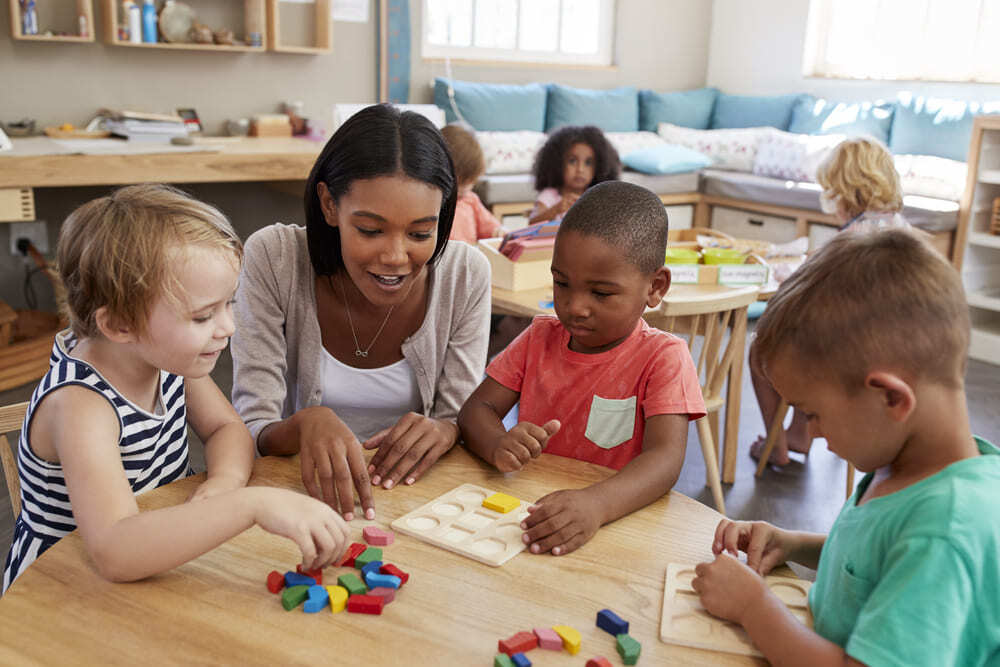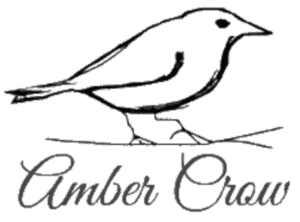Shapes and colors are not just elements of the physical world but are a significant part of our cognitive development. Like tiny keys, they unlock a universe of understanding and creativity for our little learners. In the colorful journey of learning, how do we navigate the universe of shapes and colors?
Basic Shapes for Early Learners

- Circle: The shape with no corners and a round profile, seen in objects like balls, coins, and the moon.
- Square: The shape with four equal sides and four right angles, common in objects like dice, tiles, and picture frames.
- Triangle: The shape with three sides and three corners, seen in objects like pyramids, yield signs, and pizza slices.
- Rectangle: The shape with four sides – longer top and bottom sides, shorter left and right sides – and four right angles, observed in objects like doors, bricks, and mobile screens.
The world we live in is a vast canvas of shapes – the squares that map out a chessboard, the circles that form the dots on your child’s beloved dress, or the triangle that outlines the sail of a boat swaying gently in a picture book.
Introducing these basic shapes to early learners – circles, squares, triangles, and rectangles – equates to presenting them with their first navigational compass for the physical world.
It’s akin to decoding the language of the environment around them.
By recognizing these shapes, they start to understand that a pizza slice is a triangle, their beloved storybook is a rectangle, or the wheel of their favorite toy car is a circle. It gives them the knowledge and vocabulary to describe the world in geometric terms, promoting observational skills and enriching their language development.
The Importance of Learning Shapes

Understanding shapes extends beyond the realm of mere rote learning. It sets the stage for grasping more complex concepts in mathematics, art, architecture, and more – making it a stepping stone to cognitive development. Shapes can be perceived as the fundamental alphabet of the visual world, allowing children to understand and communicate their surroundings effectively.
Recognizing and distinguishing shapes is a crucial skill that aids children in making sense of the world around them. It helps them observe and organize the visual cues they receive, categorize objects based on their form, and even predict the behavior of things.
For instance, a round ball or wheel will roll, and a square block will stack.
Learning about shapes is analogous to assembling a puzzle – just like each puzzle piece, each shape has a unique place and role in the larger picture. It adds layers to their understanding, helps them problem-solve, and equips them with spatial knowledge.
Understanding that a square won’t fit into a circular hole or a triangle has fewer sides than a rectangle are all fundamental insights that shape their interaction with the world, preparing them for more advanced reasoning and logic.
The Vibrant World of Colors
In the symphony of life, colors strike chords akin to melodies in a song, adding richness, variety, and depth to our existence.
They are the visual elements that bring a spark of magic to our mundane activities. Introducing the primary colors – red, blue, and yellow – to children is akin to handing them the keys to a secret garden, one that’s ever blooming with possibilities and vibrancy.
Imagine being a child and realizing that the bright sunflower and the delicious banana share the same color or the ocean and the clear afternoon sky have something in common.
It’s endless discovery, association, and understanding that paves the way to a lifelong appreciation of the beauty around us.
Once they’ve learned to identify these primary colors, children can embark on an artistic journey of exploration and creation. By mixing these foundational colors, they can create a wide spectrum of hues, shades, and tones – just like an artist working on a canvas. The thrill of turning two colors into a new one can be a joyous and fulfilling activity, fostering their creativity and understanding of color theory at an early age.
Why Colors Matter in Early Learning
Colors do more than just pleasing the eye or adding variety to our surroundings; they play a vital role in cognitive development and learning. Recognizing and distinguishing colors is a significant milestone in a child’s early life, almost like a rite of passage in their sensory journey.
As they learn to identify and name colors, children develop their ability to observe, compare, and classify objects in their environment.
This is a key part of logical thinking and problem-solving. Imagine the excitement of a child who realizes they can group their toys not only by size or type but by color as well!
It’s akin to weaving a vibrant thread through their growing web of knowledge and experiences, making learning a colorful adventure.
Furthermore, colors can influence moods, feelings, and even behaviors. Understanding this can help children express their emotions better. For instance, they may learn to associate bright colors like yellow or orange with happiness and darker shades with sadness or calm. In essence, colors become a non-verbal language that broadens their emotional intelligence.
Learning about colors also lays a foundation for later academic success, particularly in subjects like art, science, and geography. They start understanding that the green on a map represents forests, blue denotes bodies of water, or that mixing blue and yellow creates green. Through colors, children gain a holistic learning experience, setting the stage for more complex concepts and associations.
Exploring the Universe of Shapes and Colors
Once a child begins to recognize shapes and colors independently, they embark on a new adventure: exploring the two in tandem. It’s similar to tuning into a symphony where each instrument, each note, contributes to the creation of a beautiful harmony.
Recognizing a ‘red ball’ or a ‘yellow square’ elevates their cognitive development, enabling them to acquire complex cognitive skills such as sorting, categorizing, and critical thinking. This combination of colors and shapes makes their mental picture of the world more vibrant and complete.
It’s like being a detective, deciphering a coded message, where ‘red’ could mean ‘stop’ or ‘danger’, and ‘circle’ could mean ‘zero’ or ‘whole’. They start to interpret, connect, and communicate with their surroundings in more meaningful ways, leading to a better understanding of the world.
Games and Activities to Learn Shapes and Colors
| Game/Activity Name | Main Goal | Primary Shapes and Colors | Required Materials |
|---|---|---|---|
| Colorful Treasure Hunt | To find objects of certain colors and shapes | Depends on the objects chosen (e.g., red ball, yellow square) | Objects of various shapes and colors |
| Shape Storytelling | To learn about different shapes through story characters | All basic shapes | Storybook or created story |
| Outdoor Shape Hunt | To identify shapes in nature | All basic shapes | Outdoor space |
| Color Mixing Art | To understand how to create new colors | Primary colors: red, blue, yellow | Paint, brushes, paper |
The journey of learning shapes and colors can be filled with joy when combined with play. Children can dive into a world of colorful shape-sorting puzzles, fun outdoor games, or craft projects where creativity leads the way.
For instance, have you considered creating a treasure hunt where each clue involves finding an object of a certain color or shape?
It’s an activity that can spark excitement while reinforcing their knowledge. Or how about a storytelling session where each character is represented by a different shape or color, teaching them in the process that each shape and color has its unique identity and role?
Tools and Resources for Learning Shapes and Colors

Children’s Books about Shapes and Colors
In the journey of education, books are loyal and insightful companions. Storybooks that integrate shapes and colors into their narrative can provide an engaging learning environment.
Picture a book where ‘Triangle’ embarks on a quest to find its perfect fit in the world, or ‘Blue’ delves into the exciting venture of mixing with other colors to create new ones. These stories can transform abstract concepts into relatable characters and narratives, making learning an enjoyable experience.
Apps and Online Platforms
In our increasingly digital world, technology can be a powerful ally in early learning. Interactive apps and online platforms offer engaging, visually appealing resources to learn shapes and colors. It’s akin to taking a virtual tour through the universe of shapes and colors, with delightful discoveries and lessons at every click.
These digital tools can offer personalized, paced learning experiences, turning screen time into productive, educational moments.
Teaching Techniques for Shapes and Colors

Effective Strategies for Engaging Children
Teaching techniques can be as diverse and creative as the colors of a rainbow or the variety of shapes in a kaleidoscope. Strategies range from incorporating shapes and colors into daily routines – such as identifying the color of the day’s outfit or the shape of foods on their plate – to using music, dance, and movement to help them remember and associate shapes and colors.
It could be as simple as singing a song about a ‘blue square’ or creating a dance sequence that represents different shapes.
The goal is to make learning an interactive dialogue, a rhythmic dance between the child’s curiosity and the world’s myriad wonders. It’s about fostering an environment where learning is not a task but a joyful exploration.
FAQs – Understanding Shapes and Colors
What Age Is Suitable for Introducing Shapes and Colors?
Children can start learning about shapes and colors as early as two years old. However, the pace of learning varies with each child, and there’s no need to rush. The key is to keep the learning process fun and engaging.
How Can I Teach My Child to Recognize Different Shapes?
Start with basic shapes like circles, squares, and triangles. You can point out these shapes in everyday objects, use shape-sorting toys, or draw and color shapes together. Storybooks and educational TV shows or videos can also be effective tools.
Are There Any Interactive Games to Teach Colors?
Absolutely! You can use colorful toys for sorting games, play ‘I Spy’ with colors, or create art projects using different colors. Interactive games like these can make learning colors a fun and enjoyable process.
Can I Use Mobile Apps to Teach Shapes and Colors?
Yes, there are numerous educational apps available that are designed to teach children about shapes and colors. These apps use interactive games and animations to make learning engaging and fun. Some of these include “Shapes and Colors” and “Color and Shapes for Kids.”
How Can I Assess My Child’s Understanding of Shapes and Colors?
Assessment can be as simple as observing your child during play. Do they correctly identify shapes and colors of their toys? Can they sort objects based on shape or color? You can also ask them direct questions, like “What shape is this?” or “What color is this?” During reading time, ask your child to point out different shapes and colors in the book.
Wrapping Up Understanding Shapes and Colors
Shapes and colors, the essential elements of our world, are profound learning tools for a young mind. As educators, parents, or caregivers, we guide our little learners on this vibrant journey. It’s about teaching and inspiring, not just explaining but engaging. Through shapes and colors, we spark a child’s curiosity and foster their cognitive growth, setting the stage for a lifelong love of learning.
